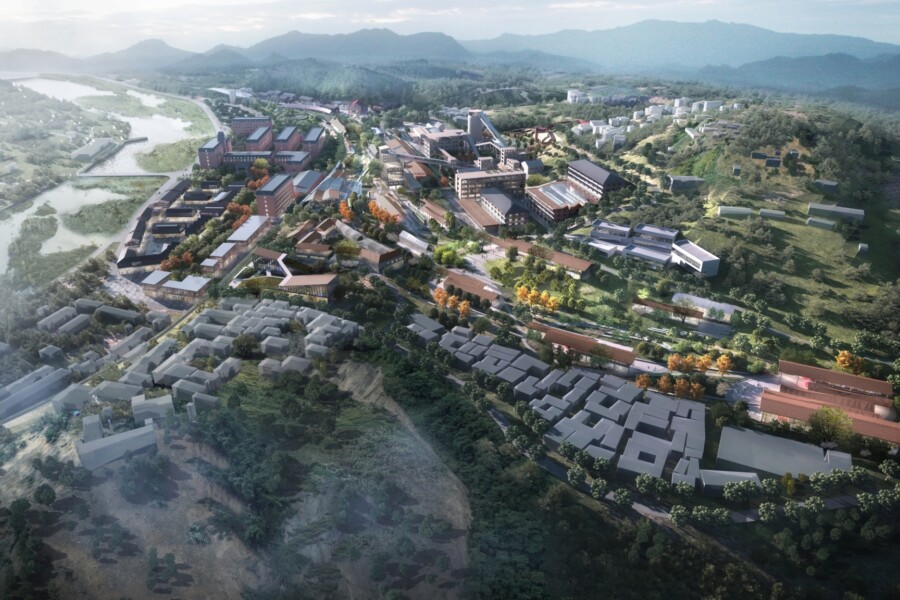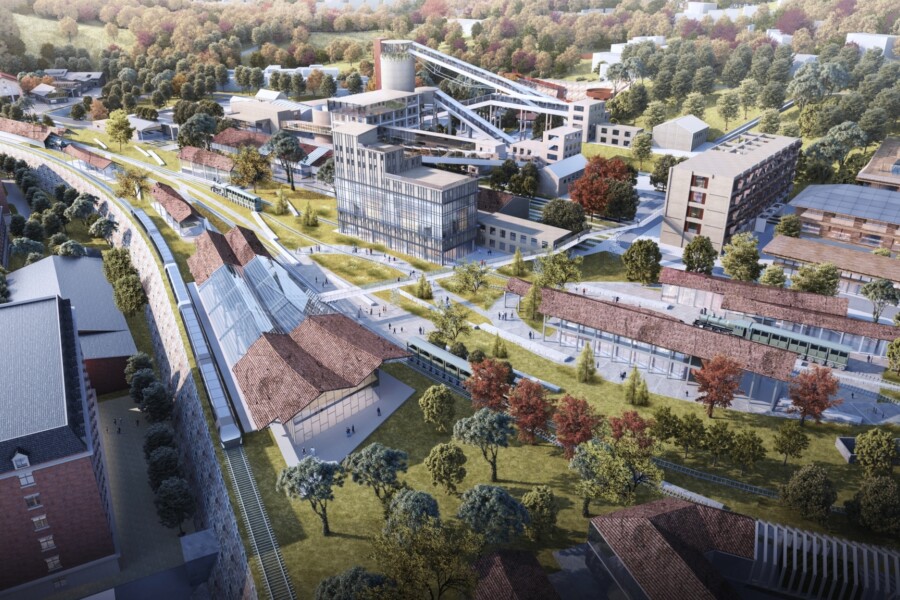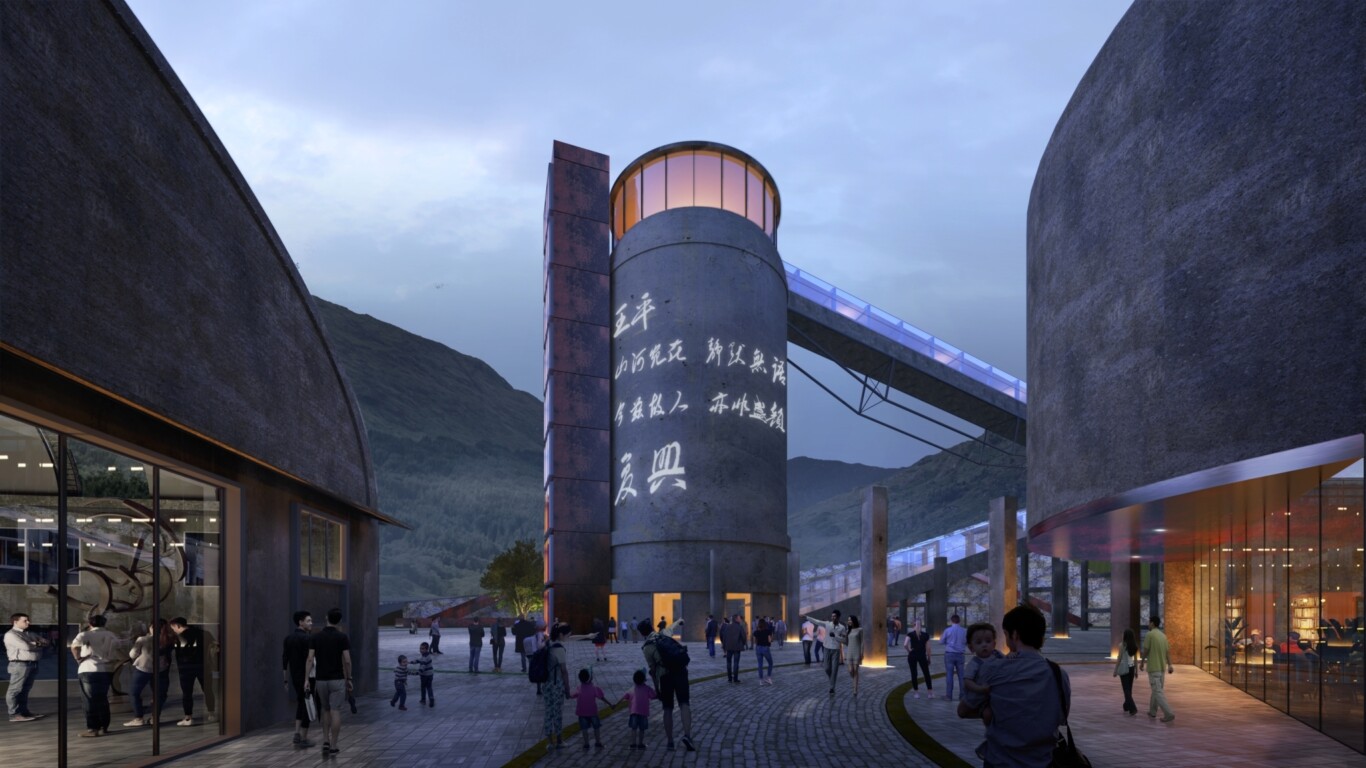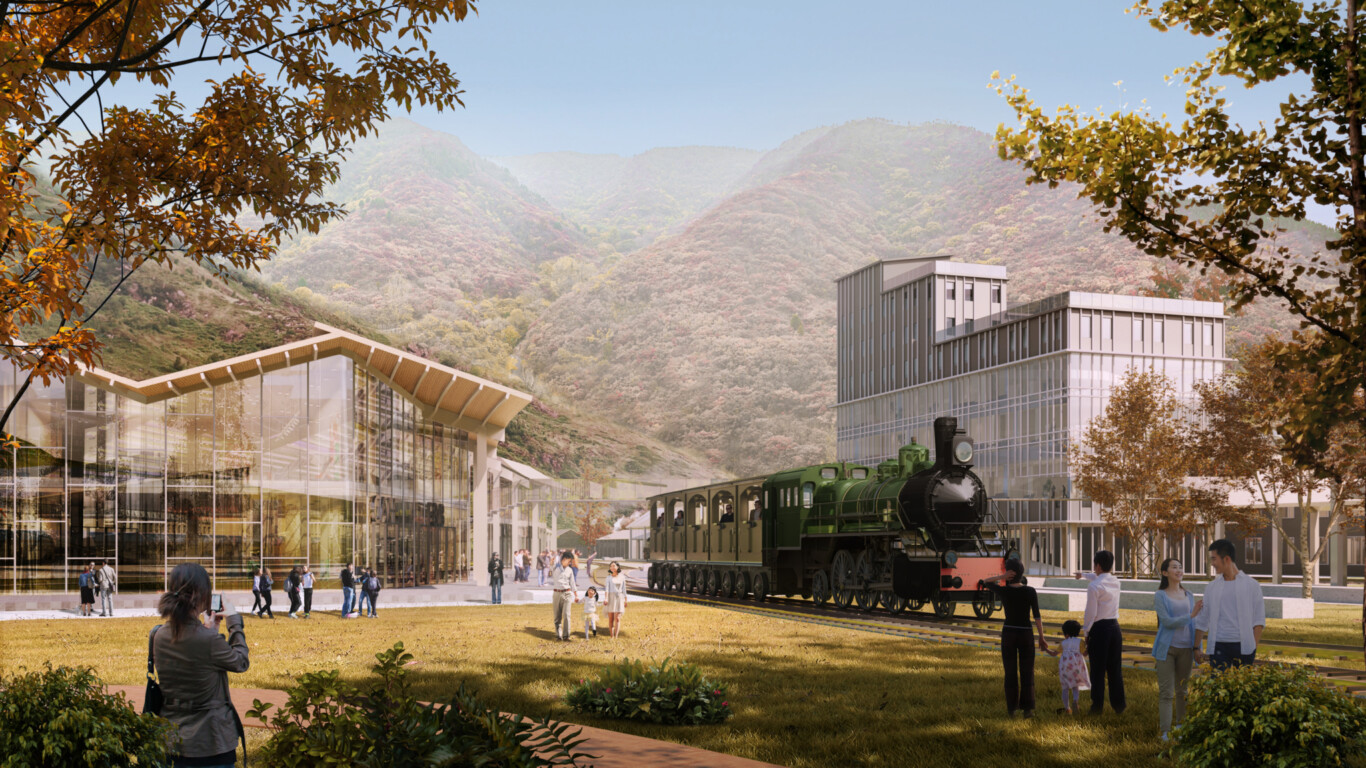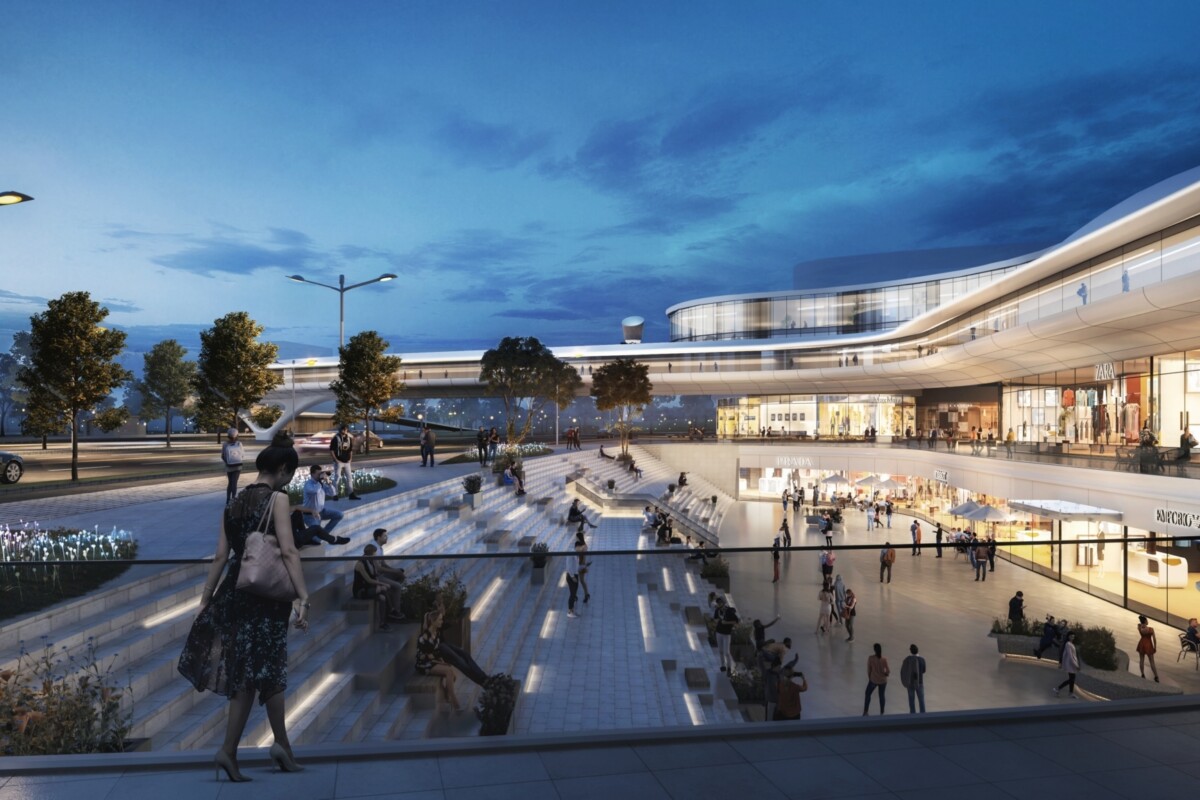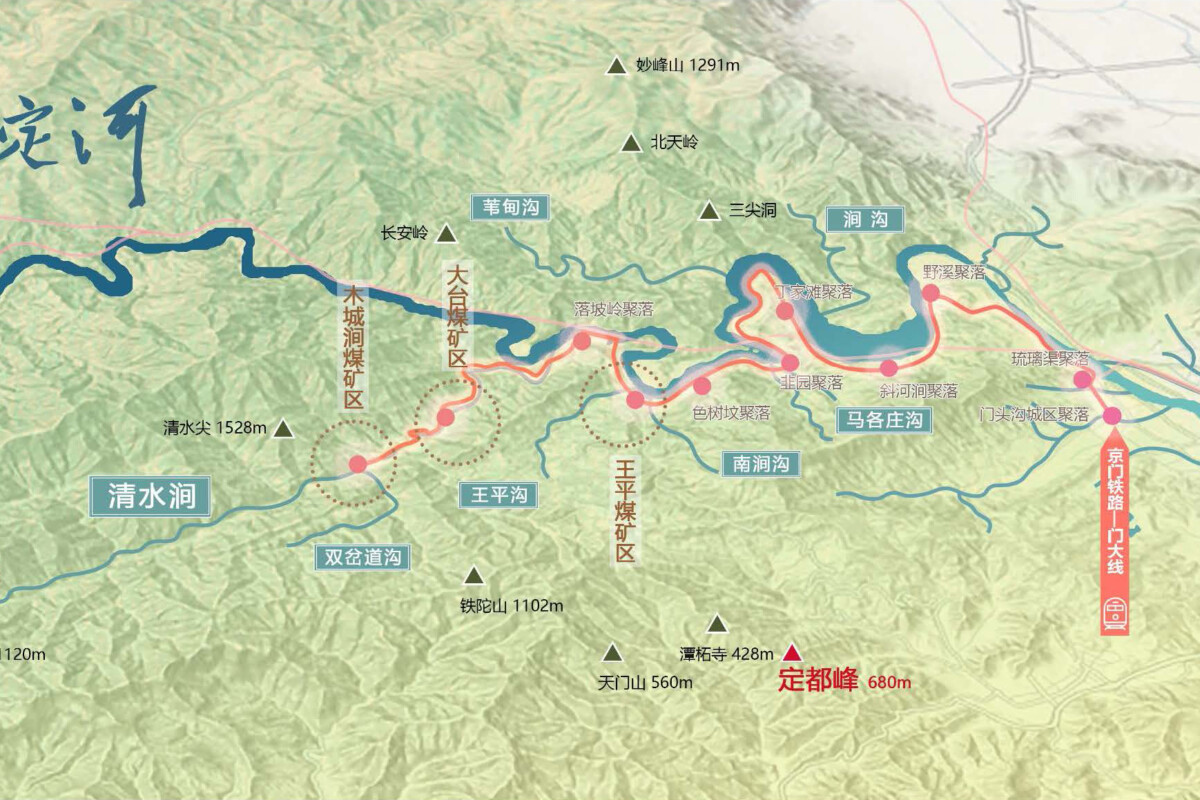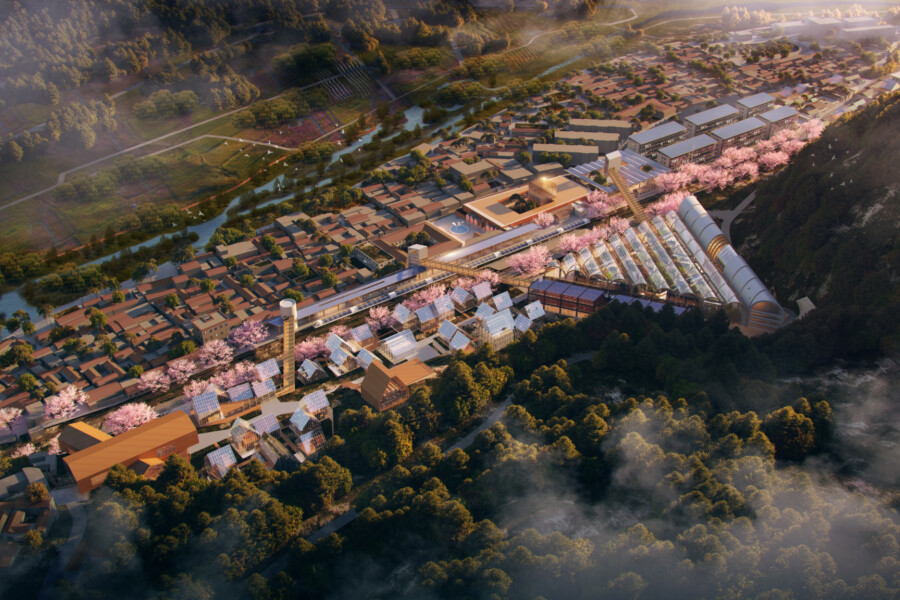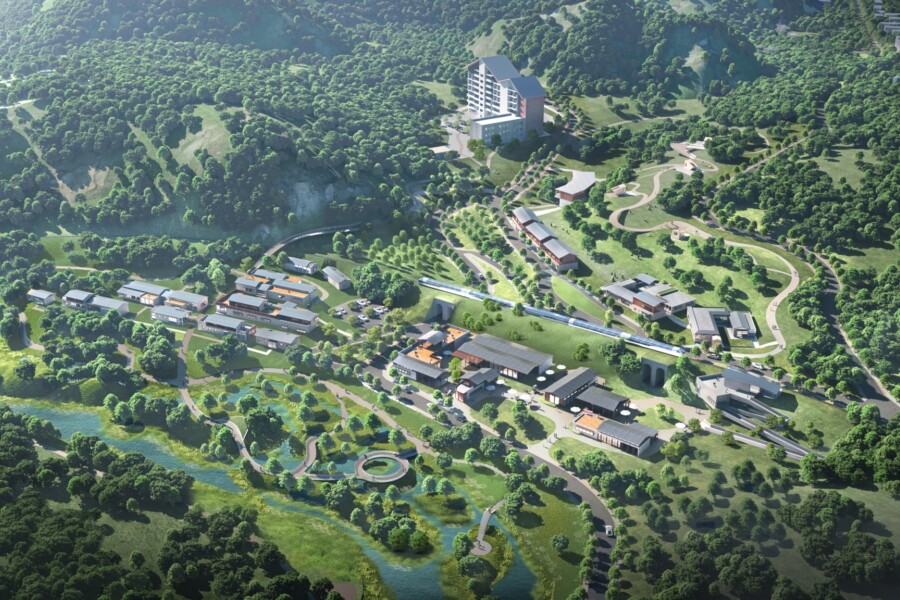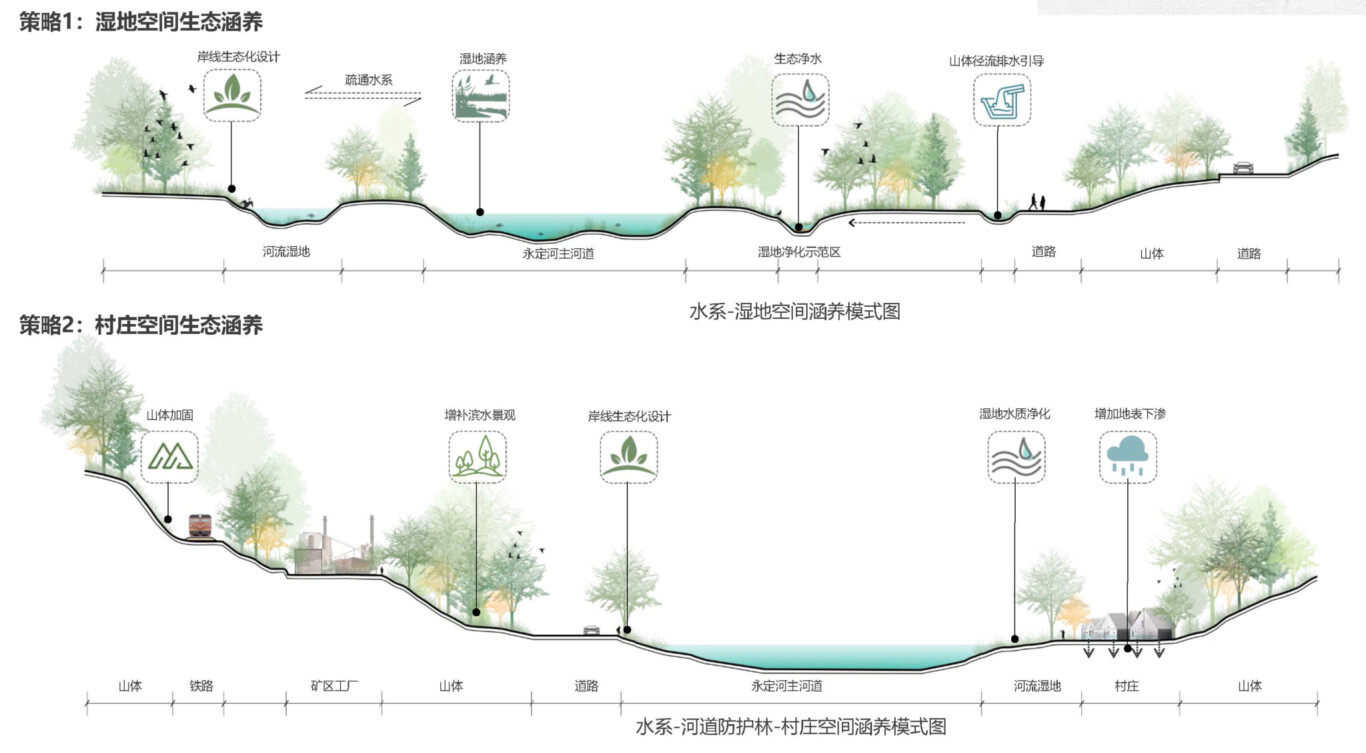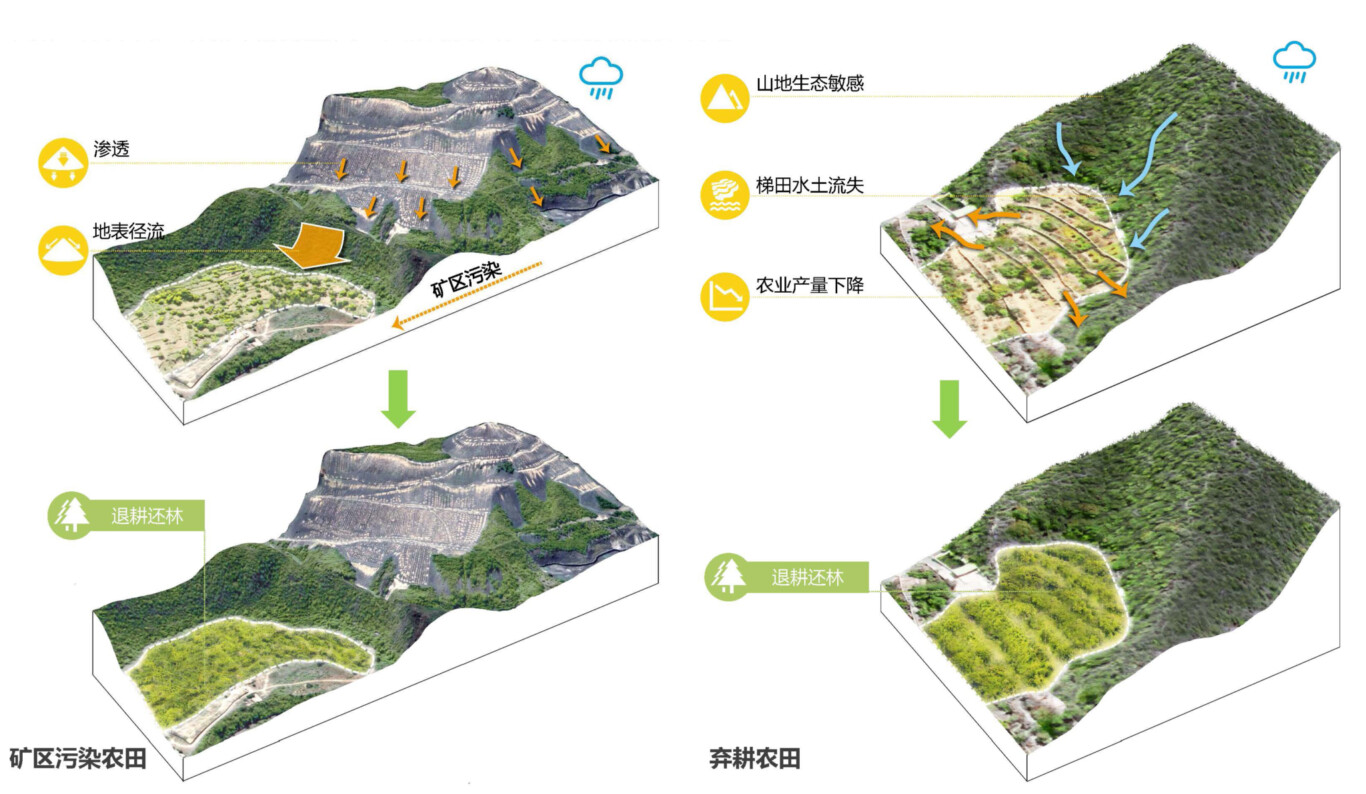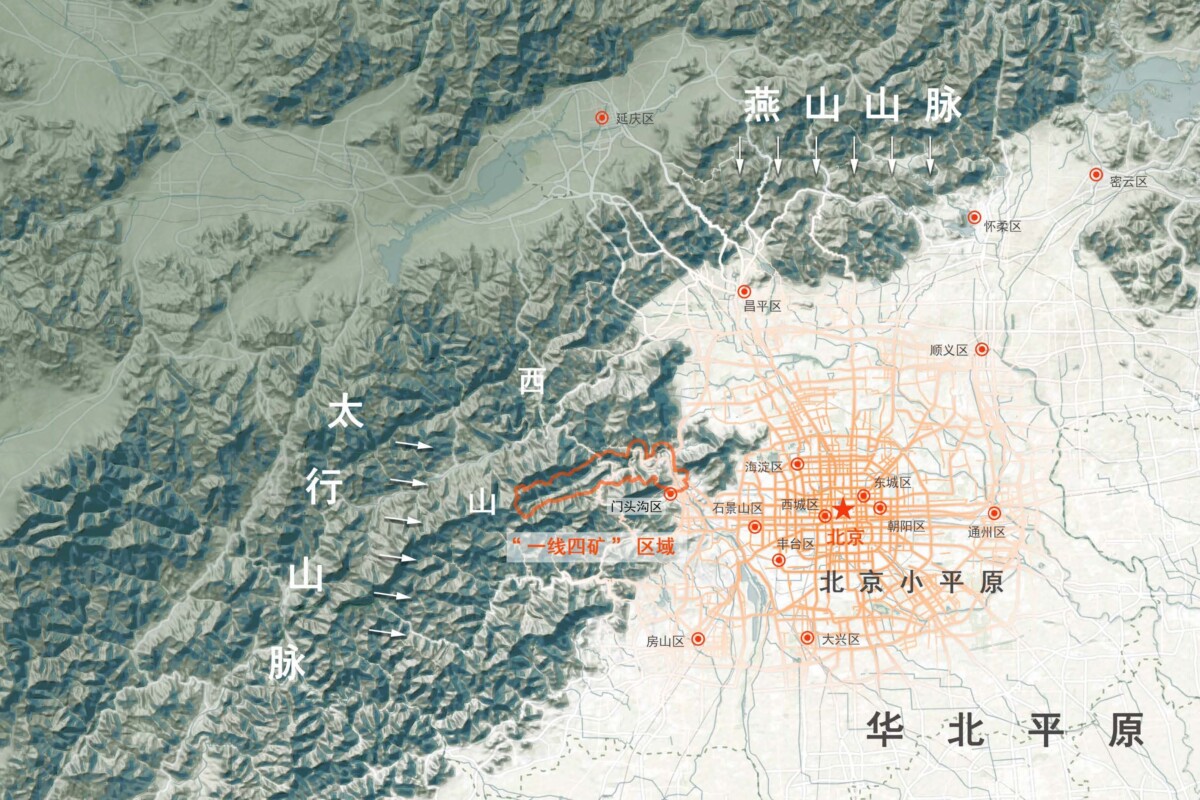
Our competition-winning masterplan for First-line Four Mines, west Beijing
Chapman Taylor Shanghai is delighted to announce another winning design. The Beijing Municipal Commission of Planning and Natural Resources and the Beijing Mentougou Government held a competition for this unique project across a historic 99km2 coal mining route.
The design promotes beautiful, regenerated ecology and evokes memories of the traditional coal mining industry. We took our inspiration from the Chinese idea of harmony between man and nature and the benefits this brings to life.
The masterplan is characterised by the varied nature of the mountain and river landscape and the twelve towns and villages connected by a long winding route along the valley.
The first stage is for the landscape to be repaired and regenerated to provide a beautiful ecological environment. The essence of each of the twelve settlements is then identified and celebrated, resulting in an extraordinary variety of experiences.
The unique characteristics of each of these twelve places are also linked to provide social, economic and visual benefits for residents and visitors. Thus, the mining industry is reborn, the ecology is reborn and the towns are reborn.
We hope that this place can become a realm of mountains and rivers, a place of poetic habitation, a source of spiritual exploration and a valley of low-carbon wisdom. The design will encourage the reactivation of social relations between different inhabitants in the cultural, artistic, digital urban and rural realms while increasing value.
The masterplan is characterised by the varied nature of the mountain and river landscape and the twelve towns and villages connected by a long winding route along the valley.
The first stage is for the landscape to be repaired and regenerated to provide a beautiful ecological environment. The essence of each of the twelve settlements is then identified and celebrated, resulting in an extraordinary variety of experiences.
The regeneration and transformation of mining areas and railways is a key part of this project, alongside an emphasis on ecological civilisation and green development.
Four key issues were identified by our team that needed to be addressed:
Damaged habitat: accelerated by perennial mining and the recent industrial mechanisation process, this area needs a systematic ecological restoration.
Loss of historical vitality: With the closure of the mines, the commercial and social vitality of the area is fading in tandem with the thousand-year history of coal mining in Beijing. To counteract this some of the towns have been developing their forestry and fruit industries, as well as leisure and residential accommodation, but much more work needs to be done.
The disintegration of the traditional communities: With the closure of the mines the symbiotic relationship between the mines and the villages gradually disintegrated with a massive loss of population.
Model innovation: In the face of complex problems involving ecology, industry and social structures, new models must be explored, not just standard methods of development.
The masterplan is characterised by the varied nature of the mountain and river landscape and the twelve towns and villages connected by a long winding route along the valley.
The masterplan is characterised by the varied nature of the mountain and river landscape and the twelve towns and villages connected by a long winding route along the valley. We have laid out cycling and walking routes as well as organising multiple types of cultural tourism trails to create exploratory experiences. The mines will be regenerated and will become part of a breathtaking landscape; a picturesque place for people living and working, to help them discover their own spiritual path.
The unique characteristics of each of these twelve places are also linked to provide social, economic and visual benefits for residents and visitors. Thus, the mining industry is reborn, the ecology is reborn and the towns are reborn.
We hope that this place can become a realm of mountains and rivers, a place of poetic habitation, a source of spiritual exploration and a valley of low-carbon wisdom. The design will encourage the reactivation of social relations between different inhabitants in the cultural, artistic, digital urban and rural realms while increasing value.
The unique characteristics of each of these twelve places are also linked to provide social, economic and visual benefits for residents and visitors. Thus, the mining industry is reborn, the ecology is reborn and the towns are reborn.
As the starting station for tourism on the mine line, Mentougou Station will be a unique 'green first' station. As a gathering place for Mentougou cuisine, the Jiuyuan Village Station is in an ecological reserve. Wangping Station is in the mining area with the best-preserved industrial heritage and the entrance for the first of the four mines. Shaishufen Station is based on green and natural rural living; a technological agricultural utopia. The Luopoling Railway Station area is incredibly scenic, creating a retreat for urban dwellers from the hustle and bustle of the city. The Data Mine zone will become a dynamic extreme sports town. Relying on natural resources, a tranquil ecological environment for wellness could be created in the Muchengjian community.
We hope that this place can become a realm of mountains and rivers, a place of poetic habitation, a source of spiritual exploration and a valley of low-carbon wisdom. The design will encourage the reactivation of social relations between different inhabitants in the cultural, artistic, digital urban and rural realms while increasing value.
